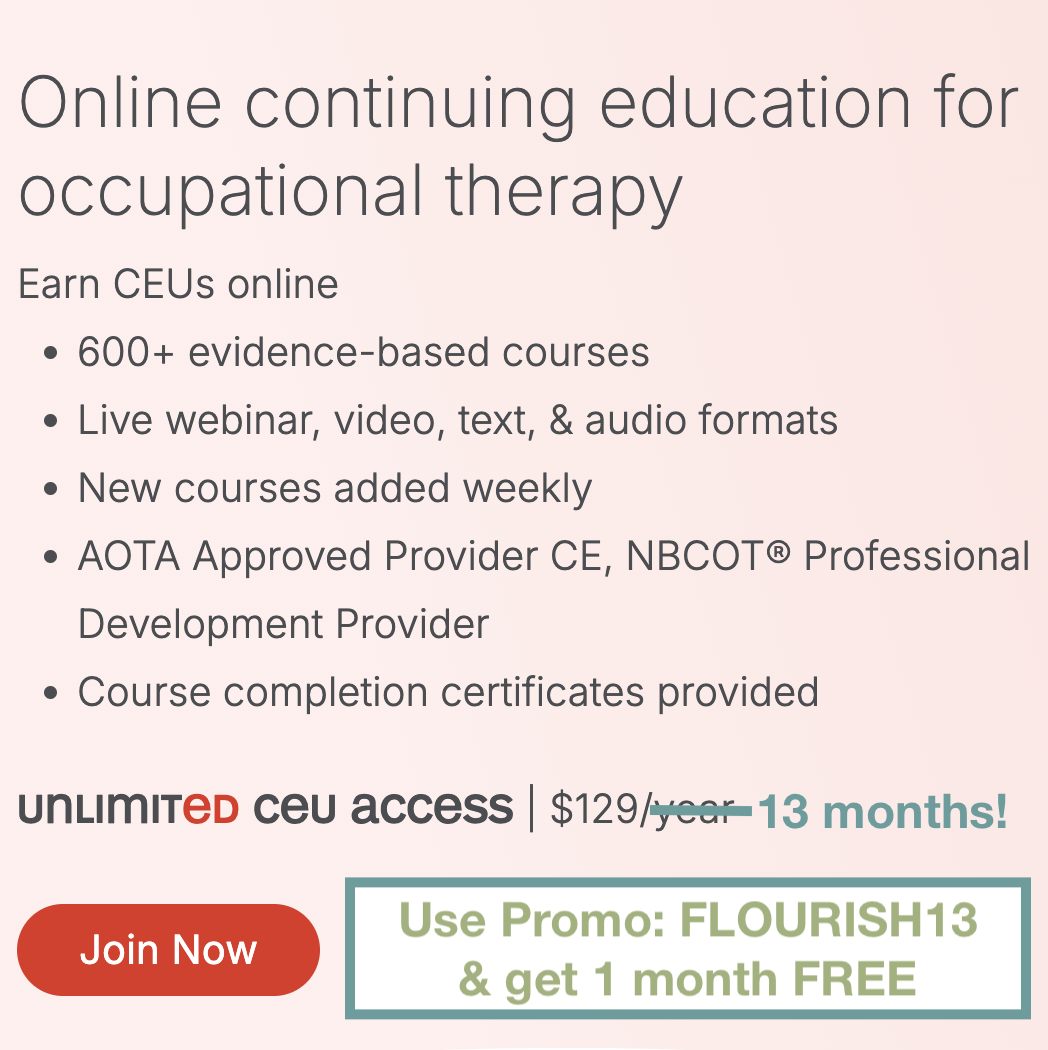SNF, Productivity, Occupational Therapy – Ugh.
I almost don’t even want to say those words out loud together…
In all actuality, I feel it shouldn’t be called “productive,” it should be called what it really is: “billable.” We are ALL as efficient as we can be in skilled nursing facilities (SNF), but SNF productivity standards are definitely a heavy overhanging stressor.
There are so many extra things that we do to provide excellent patient care that facilities can’t get paid for such as:
- talking to co-workers and support staff
- calling physicians
- hunting down patients around the building
- waiting for medications to be administered
- reviewing charts,
- completing screens
- attending department meetings
- making copies of handouts, etc, etc
and the list goes on…
This article is not about how I feel about the demands of SNF productivity standards for occupational therapy practitioners, but about how we can be the most productive (billable) in our work environments.
It is many OT practitioner’s reality – right now…today… and I want to help give some tips to deal with the cards we have been dealt so we can both provide amazing skilled occupational therapy services to our patients and meet the demands of our employers.
I also know that all of these tips won’t work for every OT in every SNF setting and it is absolutely not always realistic to do some of these things while providing hands-on, client-centered care, but hopefully you can take away some ideas that you can integrate into your day and make things a little easier, and be more efficient with your occupational therapy productivity demands.
Let’s Dig into 8 Different Things We Can Do To Get More SNF Productivity
1. Stay on Track
When we get behind on our first patient of the day, it causes a domino effect, making us behind for the rest of the day.
Tip: One way to help with this is to figure out tentatively how long you are spending with the patient and set an alarm on your watch 10 minutes before the end of your treatment session so you know when it is time to wrap things up.
2. Point of Service Documentation
I say as an occupational therapist, documenting during our treatment session is more challenging than other professions as we are so hands-on, but if possible, document a little bit at a time throughout your treatment session if possible.
Tip: If you feel rude, tell your patient exactly what you are doing and why. Example: “I don’t want to forget this, so I am going to write this down right now.” Most patients understand this.
3. Using Dictation When Possible
If you are using an iPad for documentation, use the dictation feature when completing your daily soap note. It is definitely faster than finger typing everything out on an iPad.

4. Invest in an Attachable Keyboard
If you use an iPad for documentation, an attachable keyboard definitely speeds things up and is much more efficient than finger typing your entire weekly note.
 5. Plan Ahead To Help With Your SNF Productivity
5. Plan Ahead To Help With Your SNF Productivity
If you are fortunate enough to know who is on your caseload and know who you are going to be seeing each day, on your way to work, think about what you will be working on with your patients for the day.
Tip: If you know what you are going to be doing, you can make copies, dig out games and figure out any other supplies that you will need. This way you can get them ready or at least know where things are when you are going to need them!
6. Set Up Appointments
Set up appointment times with patients for the week or even just for the next day. They may be able to come down to the therapy department at the designated time or even be up and ready to work in their room for ADL training.
Tip: Doctor appointments, outings, family visits, bingo and MORE fill up a patient’s week. Post a Weekly Schedule Form (we have a perfect one currently available in the OT Accelerator) in a patient’s room or closet so you can see what their week looks like.
7. Don’t Document More Than Necessary
If you have a weekly note due today, you don’t have to write a daily note as well. Accurate documentation is necessary, but over documenting is time consuming. Check out these comprehensive posts on both efficient and effective Occupational Therapy Goals and SOAP Note And Documentation Templates & Examples to get some tips!
8. Don’t Reinvent the Wheel
Use tactics, experience, forms, handouts, etc that co-workers have used and found to be tried and true to work in your facility. Ask around, see what they use and do.
Leave a Comment – I’d love to hear what tips you have used to be more productive in a SNF.








